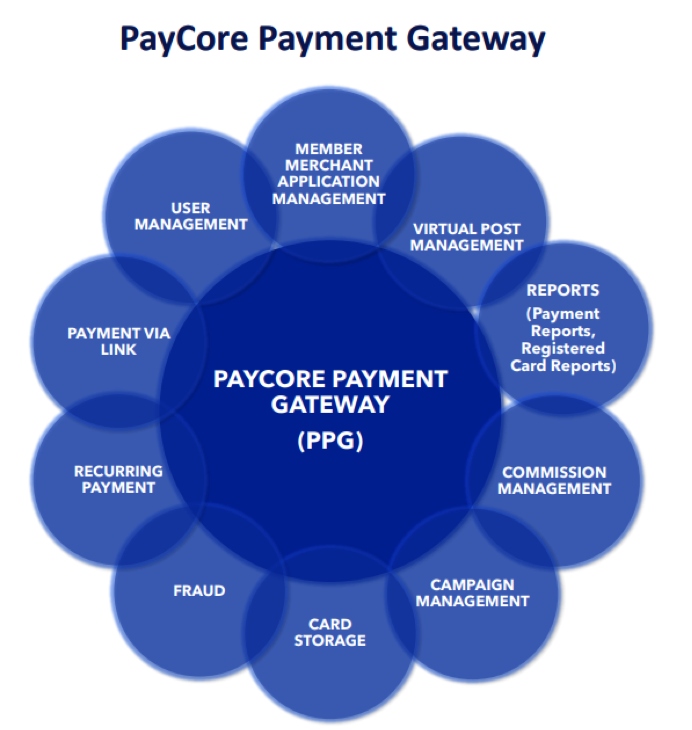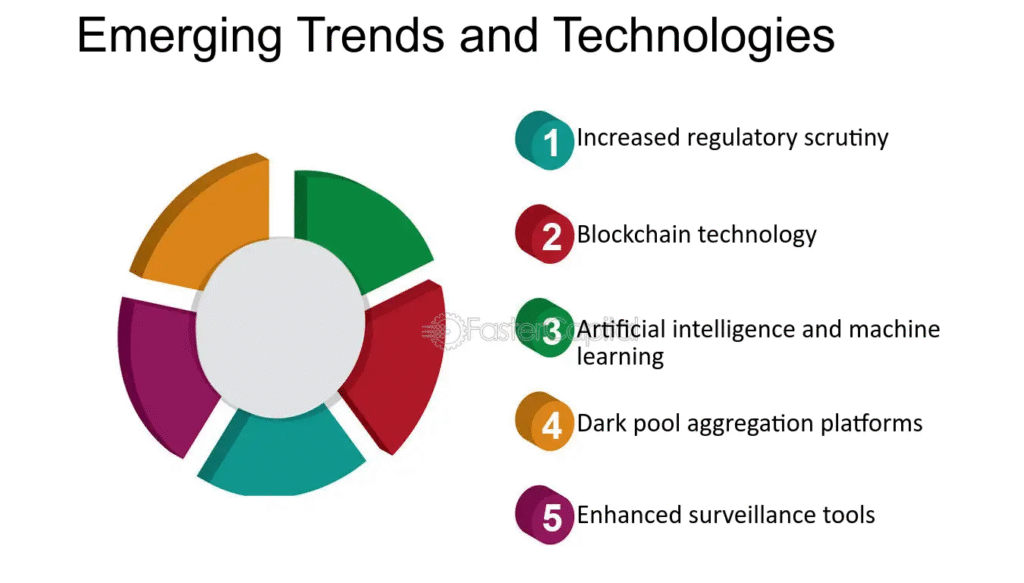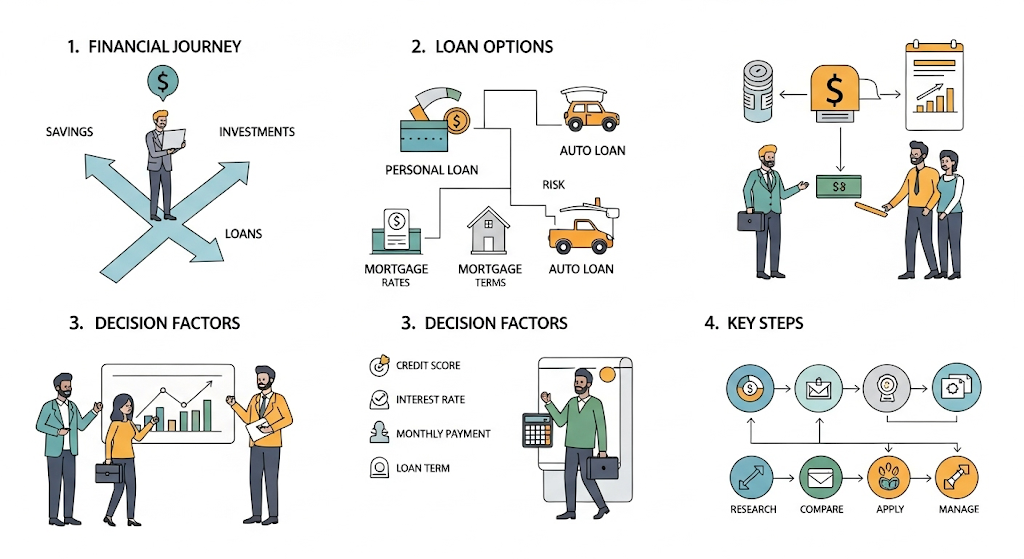
Automatic payment pools are systems designed to automate and streamline the management of financial transactions, often within the cryptocurrency space. They allow participants to earn passive income by providing liquidity to decentralized exchanges, where transaction fees are shared among liquidity providers. This method offers a way for investors, both new and experienced, to generate consistent returns by strategically placing assets into these pools.
These pools rely on smart contracts that automatically handle exchanges and payments, reducing human error and improving efficiency. Programs like Andy Howard’s Automatic Payment Pools focus on educating users about how to navigate liquidity pools, including understanding risks and potential rewards. While attractive for passive income, success depends on knowledge and careful management of the underlying crypto assets.
Understanding how automatic payment pools function and their role in decentralized finance (DeFi) can help investors make informed decisions. As interest in DeFi grows, these pools represent a practical tool for generating income beyond traditional investment methods, but they require an awareness of market dynamics and smart contract technologies.
Understanding Automatic Payment Pools
Automatic payment pools involve using crypto liquidity pools to generate returns through decentralized finance (DeFi) systems. The mechanisms allow individuals to contribute cryptocurrencies and earn passive income based on transaction fees and market activity. Different types and structures of these pools affect their risk and potential rewards.
Definition and Purpose
Automatic payment pools are crypto-based liquidity pools designed to facilitate decentralized trading while rewarding participants. They serve as automated market makers (AMMs), where users deposit cryptocurrencies to provide liquidity for trading pairs.
The main purpose is to generate passive income by earning a share of fees from transactions that occur within the pool. These pools aim to make crypto investing accessible, especially for beginners looking to engage in DeFi without deep technical knowledge.
By pooling assets, they help maintain market liquidity and reduce volatility during trades. Users effectively become liquidity providers, contributing funds that others swap between, creating a continuous flow of capital.
How Automatic Payment Pools Work
Liquidity providers deposit equal values of two different cryptocurrencies into a smart contract-backed pool. This pool then enables decentralized trading by automatically matching buy and sell orders without a traditional order book.
When users trade within the pool, they pay a small fee. These fees are distributed proportionally to liquidity providers based on their share of the pool. This process creates a source of passive income.
Automatic payment pools are managed by protocols that adjust token prices algorithmically, responding to supply and demand. This dynamic pricing replaces traditional market makers and accelerates transaction efficiency.
The system requires users to understand risks like impermanent loss, which can affect returns depending on price fluctuations of the pooled tokens.
Types of Payment Pools
Two main types of automatic payment pools include constant product pools and stable pools.
- Constant product pools, used by platforms like Uniswap, maintain the product of the quantities of two tokens constant. These support diverse token pairs but can expose providers to higher impermanent loss.
- Stable pools involve assets with closely pegged values, such as different stablecoins or wrapped tokens. Their design minimizes impermanent loss but offers lower fees due to reduced volatility.
Some pools also vary in fee structures or specialized strategies, depending on the platform or purpose. Choosing a type depends on the investor’s risk tolerance and expected returns.
| Pool Type | Key Feature | Risk Level | Typical Use Case |
|---|---|---|---|
| Constant Product | Algorithm balances token ratios | Medium to High | Diverse token swaps |
| Stable | Low price volatility | Low | Stablecoin trading |
Key Features and Benefits of Automatic Payment Pools
Automatic payment pools offer specialized tools that manage recurring payments efficiently while enhancing security and user convenience. They reduce manual work, expedite cash flow, and incorporate safety protocols aligned with those recommended for debit card accounts.
Streamlined Bill Management
Automatic payment pools centralize multiple payments into a single system. This eliminates the need to track numerous due dates manually. Users can configure their recurring bills, such as utilities or subscriptions, to be paid automatically from a linked account.
This system allows facilities and individuals to benefit from real-time transaction processing, reducing errors common with manual entries. By automating this process, it improves accuracy and prevents late payments, which could otherwise lead to penalties or service disruptions.
Convenience and Time Savings
With automatic payment pools, users gain access to 24/7 payment portals. These platforms allow for scheduling, modifying, or canceling payments without requiring direct intervention from financial staff or account holders.
Time spent on managing finances is significantly reduced because there is no need to remember or manually execute numerous monthly payments. Features like AutoPay create reliable cash flow, benefiting both payers and payees. This also minimizes the task of reconciling accounts, saving administrative overhead.
Security and Risk Reduction
Security measures in automatic payment pools mirror the best practices recommended for debit card accounts. These include encryption of sensitive data, multi-factor authentication, and continuous monitoring for unauthorized transactions.
By automating payments, the risk of human error and missed payments decreases, lowering the chance of overdrafts or penalties. Systems often incorporate instant transaction alerts and fraud detection protocols to protect users. Together, these features uphold both the integrity and confidentiality of payment information.
Popular Use Cases for Automatic Payment Pools

Automatic payment pools simplify managing shared financial responsibilities by consolidating payments among multiple parties. These systems help maintain accuracy, ensure timely payments, and reduce administrative burdens in different contexts.
Managing Household Bills
Automatic payment pools allow households to divide and manage recurring expenses like utilities, rent, and mortgage payments efficiently. Each member can contribute their share automatically, reducing late payments or missed bills.
Families can also use these pools for specific medical expenses, such as orthodontist payment plans or dental treatments requiring installment payments. This ensures that all parties meet their obligations on time without added stress.
The system supports linking different payment methods, making it easy to coordinate payments for services like electricity, internet, and even automobile down payment assistance. This streamlines budgeting and improves transparency among household members.
Small Business Payment Coordination
Small businesses, especially startups, benefit from automatic payment pools by managing multiple outgoing payments seamlessly. These platforms are useful for employee expense reimbursements, vendor payments, and service subscriptions.
For businesses in health services, like dental clinics offering root canal dentist Seattle payment plans, automated pools improve cash flow management while ensuring customers adhere to agreed payment terms. This reduces delays and administrative follow-ups.
Additionally, businesses can configure pools to prioritize payments or schedule funds distribution, which helps during periods of tight cash management or fluctuating revenue streams. Automation cuts down manual errors and speeds up transaction processing.
Group Subscription Payments
Groups sharing subscription services—such as software licenses, streaming platforms, or gym memberships—use automatic payment pools to manage costs. Each participant’s portion is collected and paid centrally, minimizing late fees and disruptions.
This method is beneficial for shared services involving multiple payment sources, like clubs or coworking spaces. It ensures consistent fund collection and tracks payment histories automatically.
Automatic payment pools enable clear allocation of expenses and help avoid confusion in groups where payment responsibilities rotate or vary. This system fosters accountability while adapting to different billing cycles and subscription terms.
Setting Up and Using Automatic Payment Pools
Automatic payment pools help streamline recurring crypto transactions by grouping payments into one collective system. Users can join or leave these pools as needed, and the process involves straightforward enrollment and participant management.
Enrollment Process
To join an automatic payment pool, the user first selects a pool that fits their payment needs, often based on return rates and liquidity options. Enrollment typically requires connecting a compatible crypto wallet and verifying identity through a secure platform.
After linking the wallet, the user deposits the chosen cryptocurrency amount into the pool. This deposit participates in the pooled liquidity, which can increase potential returns like those seen in Supernova payment systems.
Once enrolled, automatic payments occur at set intervals, reducing manual transaction effort. Notifications or dashboards often track the status of payments and earnings in real time, providing transparency and control.
Adding and Removing Participants
Adding participants to a payment pool is usually done through an invitation or registration link provided by pool administrators. New members will follow the same enrollment steps, syncing their wallets and funding the pool proportionally.
Removing participants involves withdrawing funds from the pool, which may have waiting periods depending on the pool’s terms. Withdrawals must be initiated through the platform’s interface, ensuring all automatic payments are halted for that participant.
Pool management tools typically display current members, their contributions, and payout schedules. This visibility helps prevent errors and confirms all participants are properly accounted for in the automatic payments process.
Automatic Payment Pools in Financial Products
Automatic payment pools streamline recurring payments by linking with various financial tools. They enable efficient management of shared expenses by integrating bank accounts and card networks, simplifying transactions for users and businesses alike.
Integration with Bank Accounts
Automatic payment pools often connect directly to bank accounts, including business accounts like a TN bank business line of credit. This allows for seamless debiting of shared expenses or subscription fees without manual intervention. Users can allocate funds from multiple accounts, making it easier to distribute payments across a group or organization.
This integration enhances control over cash flow by scheduling payments and monitoring transaction history in one place. For businesses, it facilitates cost-sharing and budget management, reducing the risk of missed or late payments. Security features such as multi-factor authentication and encryption protect sensitive banking information during transactions.
Connection to Credit and Debit Cards
These pools also support linking credit union business credit cards and popular debit cards like Shazam debit cards or US debit cards versus Visa debit cards. This broad acceptance ensures that users can participate regardless of their card provider.
Using credit and debit cards with automatic payment pools enables users to earn rewards or cash back on purchases while maintaining effortless payment collection. The system supports variable payment sources, which is crucial for groups with mixed payment preferences. Transaction processing is typically quick, thanks to card network efficiencies, making it suitable for both consumers and businesses managing subscriptions or shared bills.
Automatic Payment Pools and Credit Management

Automatic payment pools can help users streamline bill payments and reduce missed payments, which directly affects their credit management. By automating recurring charges, they foster timely payments, minimize late fees, and support improved credit utilization tracking through integration with software tools.
Impact on Credit Card Usage
Automatic payment pools reduce the chance of late credit card payments by scheduling recurring charges. This helps users avoid penalties such as credit card abuse charges which often arise from missed or delayed payments.
They assist in reconciling credit card statements efficiently, especially when paired with credit card reconciliation software. This combination simplifies verifying shared expenses or subscription fees charged across multiple cards.
Proper use of automatic payment pools encourages responsible credit card usage. However, users must still monitor payment schedules to prevent unintentional overdrafts or double charges, which could negatively impact credit scores.
Influence on Credit and Loan Products
Consistent on-time payments through automatic pools can improve users’ credit profiles. This can increase their chances of approval for real estate lines of credit, home equity loans in second positions, or unsecured business lines of credit.
Automatic payment history from these pools may support creditworthiness when opening credit lines for specific purposes, such as home auctions or construction lines of credit. Lenders often view reliable payment automation as a positive sign of financial discipline.
Still, users should understand that while automatic payment pools help maintain good credit standing, loan approval depends on broader financial factors beyond payment history alone.
Risks and Security Considerations
Automatic payment pools involve complexities that require careful management of fraud risks, dispute handling, and legal timeframes. Operators must implement strong fraud prevention practices, establish clear procedures for disputes and chargebacks, and understand relevant legal limits to avoid financial losses and regulatory issues.
Fraud Prevention Strategies
Fraud in automatic payment pools often arises from unauthorized access or misuse of payment methods, such as bypassing a debit card’s PIN or fraudulent card use. To reduce risks, it’s critical to deploy multi-factor authentication and monitor transactions for soft declines, which signal temporary authorization issues and can indicate suspicious activity, versus hard declines, which are permanent rejections often linked to invalid or compromised card data.
Tokenization and encryption protect sensitive card information during transactions. Regularly updating security protocols and integrating Point-to-Point Encryption (P2PE) can further limit exposure. Providers should also perform real-time behavioral analytics to quickly detect patterns consistent with credit card abuse or theft attempts, preventing first-time offenses from escalating.
Handling Disputes and Chargebacks
Disputes and chargebacks present operational and financial challenges in automatic payment pools. Customers may initiate chargebacks over unauthorized transactions, such as when their card is used without possession. Establishing clear documentation and swift communication processes is essential to resolve these conflicts efficiently.
Payment processors should distinguish between disputes arising from legitimate service issues versus fraud. Implementing prompt verification steps and utilizing evidence like transaction logs indicates whether a PIN was bypassed or whether the charge was valid. Providers should also educate users on recognizing soft declines as normal versus potential fraud flags to reduce unnecessary disputes.
Statute of Limitations for Disputes
Understanding the statutory deadlines for credit card disputes and debt claims is crucial in managing financial risk. For example, Georgia’s statute of limitations on credit card debt is typically four years. This limit defines the window within which creditors may legally pursue payment or file liens.
Failure to address disputes within these timeframes can weaken a provider’s position in recovering funds. Likewise, knowing when a lien can be placed or when proceedings may become invalid is important. This legal awareness helps prevent prolonging unresolved claims, especially in cases involving felony credit card abuse or contested charges, ensuring compliance with applicable laws.
Automatic Payment Pools for Loans and Credit Lines
Automatic payment pools facilitate the organized management of recurring loan payments and credit line obligations. They help borrowers avoid missed payments by pooling funds and distributing them automatically, which streamlines cash flow and supports timely repayment.
Home Equity Line of Credit Integration
Managing payments for a Home Equity Line of Credit (HELOC) requires attention to variable interest rates and minimum monthly payments. Automatic payment pools can integrate seamlessly with HELOC accounts, ensuring funds are allocated efficiently based on the current balance and interest rates, like those typical in Connecticut or Wichita, KS.
Borrowers benefit from consistent, automated payments that adapt to rate fluctuations. This reduces the risk of late fees or credit score damage. For example, guidance on home equity line of credit rates in CT or Heloc rates in Wichita allows borrowers to anticipate payment amounts, making it easier to maintain the pool at sufficient levels to cover dues.
Business Loan Payment Pools
Automating payments for business loans requires precision and flexibility, especially for varying loan types such as closed-end home equity loans or cash value line of credit products. Automatic payment pools enable businesses to allocate funds across multiple debts from a central source, ensuring no payment is missed.
Such pools support borrowers who handle loans with different interest rates and terms, adjusting distributions based on due dates and payment priorities. This also aids businesses in managing cash flow effectively, as payments are synchronized and deducted directly without manual intervention, preserving credit standing and financial stability.
Specialized Payment Situations Using Pools
Automatic payment pools can simplify complex financial obligations that involve multiple parties or recurring rules. They enable clear tracking, timely disbursements, and reduced manual processing in specific payment contexts such as taxes, government benefits, and military-related payments.
Tax Payment Pools
Tax payment pools centralize funds to cover tax obligations efficiently. For example, in Oregon, estimated tax payments must be made quarterly. A tax payment pool allows individuals or businesses to allocate funds regularly, ensuring timely payments without needing to manage each installment separately.
These pools also reduce late penalties by automating transfers based on set schedules or thresholds. Tax professionals or businesses benefit from clear records showing the allocation and remittance of tax amounts. This method works well for complicated tax scenarios where multiple taxes converge, mitigating errors and easing reconciliation with government agencies.
Government and Social Security Payments
Government benefits like Social Security can also be managed through automatic payment pools. The $1800 Social Security payment often refers to a specific stimulus or supplemental benefit disbursed to eligible recipients.
Payment pools help recipients track these funds alongside other government disbursements or recurring bills. They ensure that periodic Social Security payments are correctly segmented for various uses, such as healthcare or housing expenses. This organization assists in budgeting and prevents missed payments on critical commitments tied to these benefits.
Military Payment Coordination
Military payment pools are designed to manage specialized transaction systems for service members. One historic example is the 5 Cent Military Payment Certificate, which was part of military financial management to control currency use in occupied areas.
Modern pools automate allotments like family support funds, allowances, or savings plans. They ensure accuracy and compliance with military regulations by automating distributions and consolidating accounts. This approach decreases administrative overhead and speeds up financial coordination for active duty personnel and veterans alike.
Payment Disputes and Legal Implications
Disputes over automatic payment pools often involve disagreements on payment amounts, timing, or obligations. Resolving these conflicts requires understanding the legal frameworks surrounding contract enforcement and remedies available when payments are withheld or disputed.
Contractor Disputes Over Pool Payments
Contractors may face challenges when payments from automatic pools are delayed or contested. Even without a written contract, a contractor can sue for non-payment by relying on implied contracts or quantum meruit—legal principles allowing recovery for services rendered.
Claims often focus on proving the work was completed and payment was due. Documentation such as invoices, communications, and work records is critical.
Disputes may also arise over payment pool calculations or deductions. Clear payment terms and transparent records reduce conflicts, but in their absence, contractors must rely on legal standards to clarify obligations.
Legal Remedies for Non-Payment
Legal remedies include filing claims for breach of contract or pursuing alternative dispute resolution methods like mediation. Courts can order payment plus interest and damages depending on the case.
Regarding attorney fees, whether an attorney can charge clients for credit card transaction fees depends on jurisdiction and agreement terms. Some jurisdictions permit passing such fees to clients if disclosed upfront.
Businesses involved in automatic payment pools should maintain detailed records to support legal claims and carefully review contracts or agreements for clauses related to payment disputes and fee responsibilities.
Emerging Trends and Innovations in Automatic Payment Pools

Automatic payment pools are evolving through increased integration with digital wallets and ongoing advancements in payment automation technologies. These developments improve transaction efficiency, security, and customer convenience—shaping how businesses manage payments and liquidity.
Digital Wallet Integrations
Digital wallets are becoming a central feature in automatic payment pools, allowing seamless aggregation and management of funds across multiple accounts. Integration with platforms like Supernova payment systems enables users to link various payment sources for automatic distribution or collection within one interface.
This connectivity supports new payment methods such as buy now, pay later (BNPL) embedded within digital wallets, enabling complex transactions that combine automatic pooling, instant payments, and credit features. These integrations improve cash flow visibility and reduce manual reconciliation efforts.
By syncing real-time transaction data, digital wallets also enhance fraud detection and risk management within automatic payment pools. This tight coupling leads to smoother user experiences and faster processing times, critical for consumer and business financial operations in 2025.
Future of Payment Automation
Advancements in AI and machine learning are driving the next generation of automatic payment pools. These technologies optimize pool selection criteria, liquidity management, and predictive risk controls, which improve decision-making speed and accuracy.
Emerging frameworks incorporate correlation metrics to assess payment patterns and balance risks across pools. This allows dynamic adjustments to allocation strategies based on evolving market conditions or business needs.
Innovations like voice-activated commands and real-time payment capabilities are becoming more common, supporting instant, hands-free management of payment pools. Payment ecosystems leveraging these features, including Supernova payment solutions, aim to simplify complex payment workflows and reduce operational overhead.
Such automation trends will expand beyond corporate use, enabling small businesses and consumers to automate recurring payments with improved reliability and customization.




